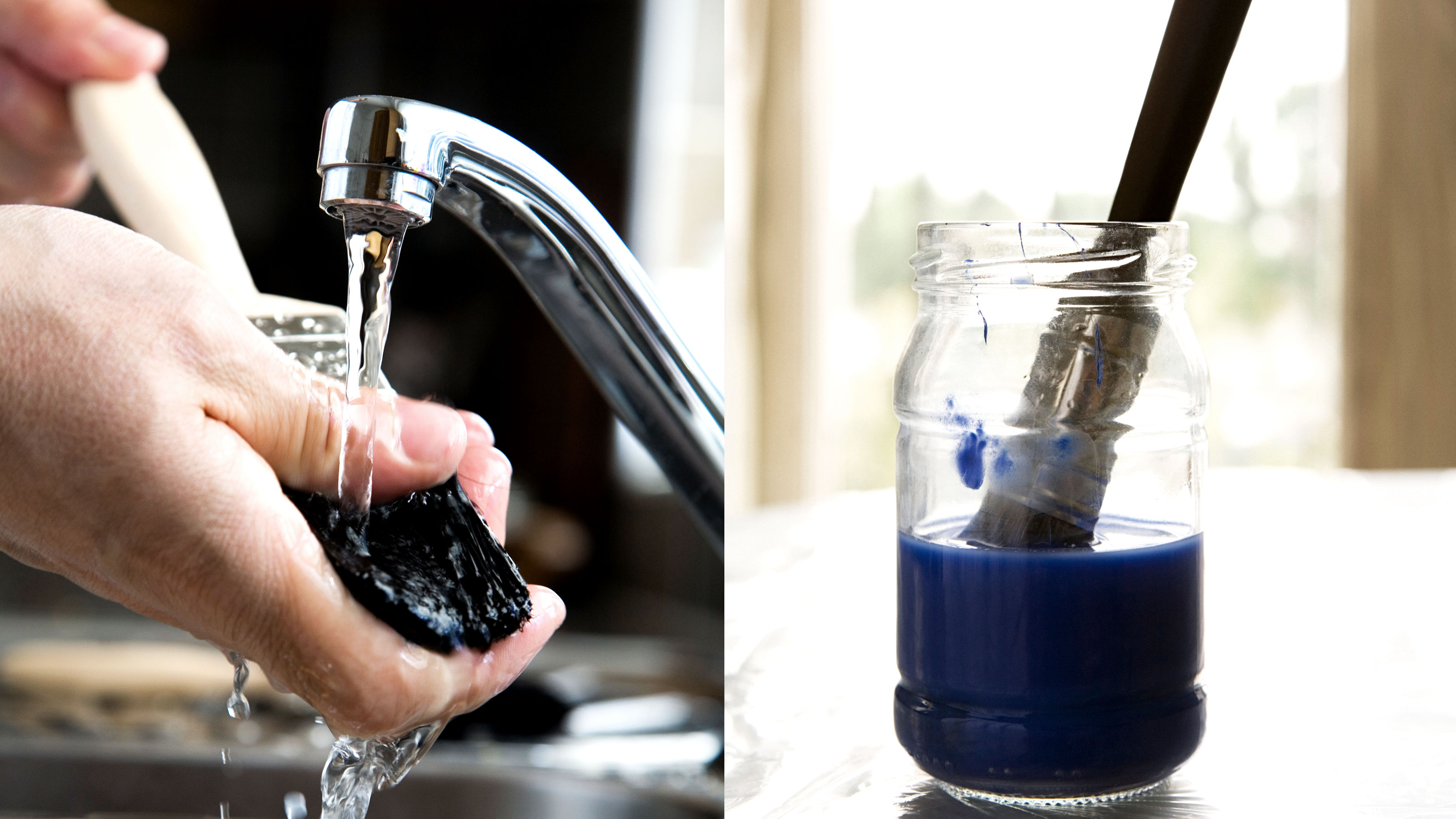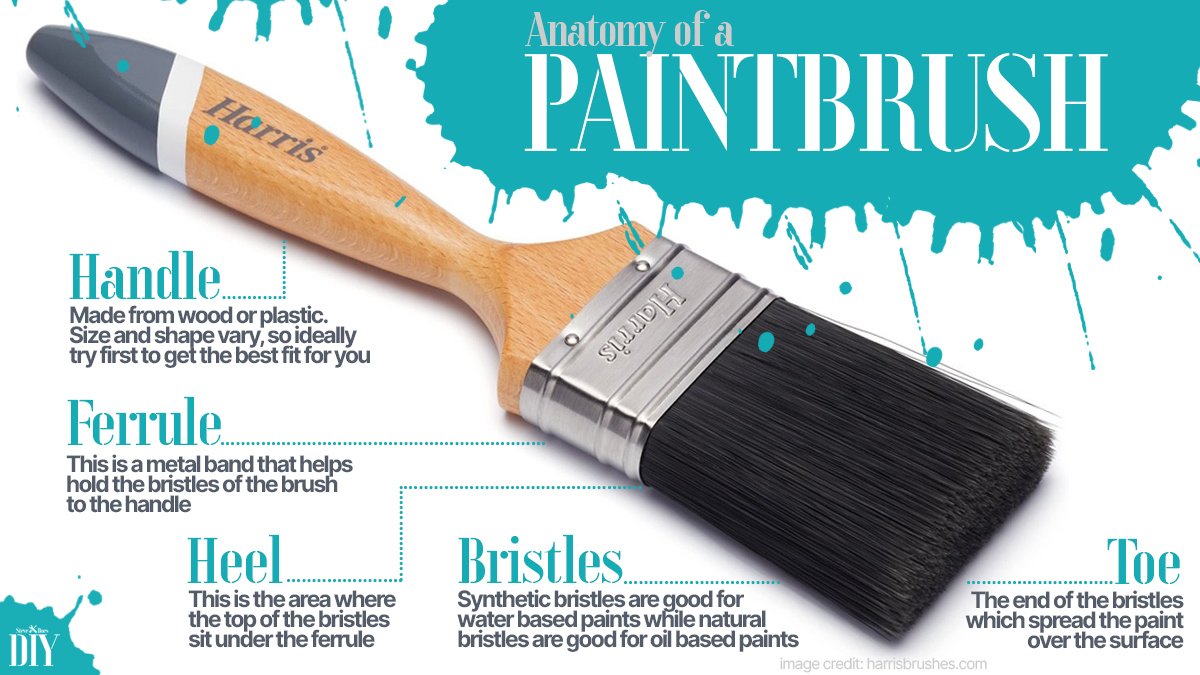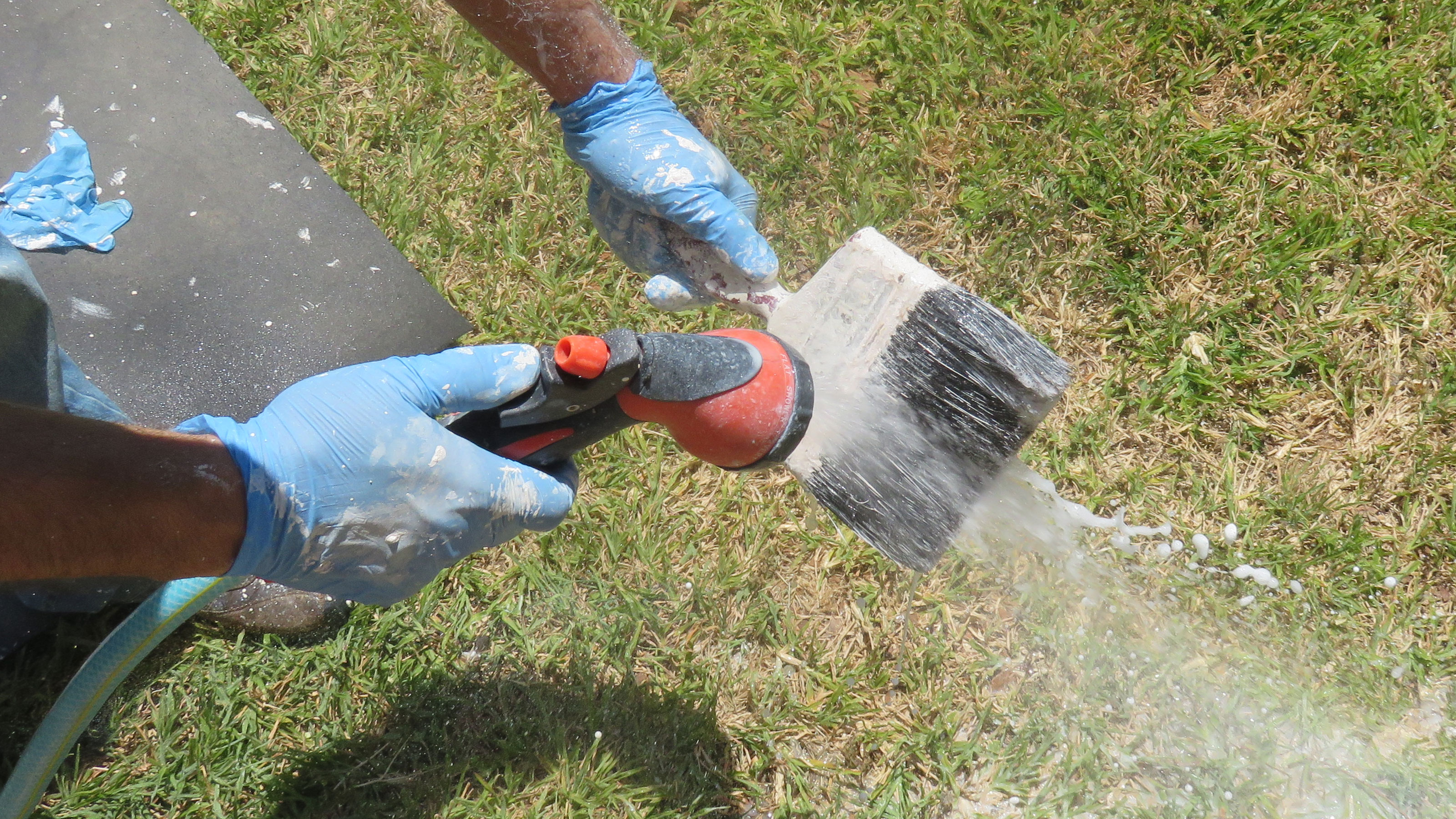Learn how to clean gloss paint brushes properly and keep them in top condition for longer
Need to know how to clean gloss paint brushes? Here we give you the lowdown how to clean water-based and oil-based paints to keep your brushes in top condition

When you have finished painting it is essential that you know how to clean gloss paint brushes. A poorly maintained paintbrush is no good to any painter or DIYer. If you don’t clean a paint brush properly it will retain small bits of paint that will make an appearance on your neat gloss paint the next time you use the brush.
If you are painting a wall, window, door, skirting board or any other type of trim you don’t want to be constantly picking out tiny bits of old paint. This will take time and effort and if you don’t bother you will be left with a less than imperfect finish.
Here we give the lowdown on how to clean your paint brushes of both water and oil based gloss paint.
How to clean gloss paint brushes: water-based paint
Water-based gloss is much easier to clean that oil-based gloss paint. Follow these quick steps to keep your brushes clean:
1. Remove excess paint
The first step is to remove the gloss paint from the paint brush. Start by wiping the brush on the side of the paint tin or paint kettle. Next wipe the remaining paint down on newspaper or a cloth.
2. Wash with water
Hold the paint brush under a running tap – bristles down - for around 30 seconds to remove most of the paint. Now massage the bristles with your fingers and thumb to remove more paint. If you have a paint brush cleaning tool use this to finish. If you don't have one think about investing in one; they are cheap and extremely useful for getting a good clean brush.
3. Spin dry
Once the brush is clean you need to get rid of as much water as possible. First squeeze with your hand and wipe with a cloth. If you have an outside space, flick your wrist a few times to get rid of the water. If you are restricted for space, get an empty container – similar in size to a paint tin – put the handle between the palms of your hands and move in a rubbing motion to spin the paint brush dry.
4. Store flat
Now lay flat to completely dry out. When completely dry wrap in newspaper or in the sleeve your brush came with when you bought it.

How to clean oil-based paint from gloss paint brushes
An oil-based gloss paint is a different type of paint to water-based paint and needs to be treated slightly differently.
1. Follow the first step in the water based method and remove as much paint as possible. Now fill a container that is just bigger than the paint brush – a jam jar is a good choice for brushes up 2.5-3 inches – with solvent.
2. Stir the brush for around 30 seconds in the solvent to loosen the paint. Take out the paintbrush and squeeze in a cloth and repeat. Alternatively, you can leave the brush in the solvent and clean it later.
3. To make sure that you have all the paint and solvent removed from the brush, fill a container with warm soapy water and massage the bristles with your hands. Remove and rinse under a tap until the water is clear.
4. Now flick or spin dry the paintbrush to get rid of the water and leave to dry. Don’t forget to store flat, or alternatively hang if your paintbrush has a hanging hole in the handle.
If you are using a roller to apply a gloss paint you need to know how to clean paint rollers. The process and tools are very similar to cleaning a paint brush whether your using a water or oil-based paint.
Can I wash paint brushes in the sink?
Yes and No. If the sink you are going to use is situated in your kitchen and surrounded by items you don’t want splashed with paint you have two options. Clean your brushes outside or get a waterproof sheet and cover the surrounding areas and floor.
This is especially pertinent if you are washing oil-based gloss paint brushes that have been used for painting windows or doors. You will need to use a paint cleaner or some type of solvent which can pollute the water system. Keep the used solvent in a household jar or container and reuse. Dispose of properly when finished with; check with your local council.
Also, oil-based paints will leave paint wash over the sink, which will need to be cleaned straight away to keep the sink in its original condition.
Can I use a hose to clean paint brushes?
If you are using a water-based paint and have an outdoor space where you clean your gloss paint brushes, a hose is a good idea. First remove as much paint as you can but wiping your paint brush on a cloth or newspaper.
Then hold the brush down and away from you – and over an area where you don’t mind getting paint wash – and start spraying. Alternatively, spray into a large container – an empty emulsion container or bucket are good choices – to help. Keep going until the water runs clear and shake dry.

How do I store gloss brushes overnight?
If you are going to use your gloss brushes the next day, you can save yourself some time and effort and store them ready for action when needed. First remove as much paint as possible.
Wipe on the side of a tin or paint kettle, then get a clean cloth or rag and squeeze out the remaining paint. Now wrap the ferrule and bristles tightly in cling film and lay flat somewhere out of the way. Alternatively, get a plastic bag and an elastic band and secure tightly around the ferrule and bristles.
Be careful not to drop your paint brush when squeezing out the paint. Do it over a dust sheet or similar, but if you do drop you will need to know how to get paint off carpet or the floor. One tip is to clean as soon as possible with water or solvent depending on what paint you are using.
Get the Homebuilding & Renovating Newsletter
Bring your dream home to life with expert advice, how to guides and design inspiration. Sign up for our newsletter and get two free tickets to a Homebuilding & Renovating Show near you.
Steve Jenkins is a freelance content creator with over two decades of experience working in digital and print and was previously the DIY content editor for Homebuilding & Renovating.
He is a keen DIYer with over 20 years of experience in transforming and renovating the many homes he has lived in. He specialises in painting and decorating, but has a wide range of skills gleaned from working in the building trade for around 10 years and spending time at night school learning how to plaster and plumb.
He has fitted kitchens, tiled bathrooms and kitchens, laid many floors, built partition walls, plastered walls, plumbed in bathrooms, worked on loft conversions and much more. And when he's not sure how to tackle a DIY project he has a wide network of friends – including plumbers, gas engineers, tilers, carpenters, painters and decorators, electricians and builders – in the trade to call upon.

